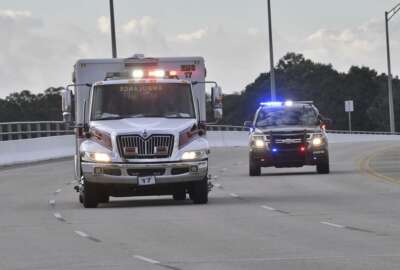
DoD’s decentralized strategy for active shooters could be dangerous, IG says
DoD does not have an overarching policy to deal with active shooters, which may lead to confusion in a live situation.
The Defense Department does not have an overarching strategy for active shooter situations and that could lead to confusion and, ultimately, more casualties.
A new investigation from the DoD Inspector General says the Pentagon, instead, has its active shooter incident policies on bases and facilities for DoD law enforcement spread out over five different policies, which elements only provide minimal response requirements.
“Due to the lack of an overall active shooter DoD law enforcement policy, the DoD law enforcement did not consistently comply with the five existing DoD policies and did not establish consistent policies, plans, or training for responding to an active shooter incident,” the report states.
The findings are concerning considering the United States has had 416 mass shootings to date in 2022, according to the Gun Violence Archive, a not-for-profit organization that collects gun violence data from law enforcement.
Since 2009, there have been 11 active shooter situations on U.S. military bases. The most recent was at the Army Recruiting Station in Greensboro, North Carolina in 2020. While no one was injured in that incident, other active shooter situations left tragic impacts on the military community. A shooting at Ft. Hood, Texas in 2009 left 13 dead and another at Washington Navy Yard killed eight.
“The patchwork of policies increases confusion even in the best of circumstances, let alone during the moment of crisis during an active shooter scenario,” Katherine Kuzminski, a senior fellow at the Center for a New American Security, told Federal News Network. “DoD law enforcement and installation leadership could therefore lose valuable minutes evaluating the rights and responsibilities assigned to them in such moments. DoD would benefit from the development of an entirely new instruction focused on active shooter prevention and response, including all aspects of emergency management, arming of personnel, lessons learned, incident response plans, and training specific to active shooter incidents.”
It’s not just the policies that are the problem though. The DoD IG found that installation leadership were not properly complying with the active shooter incident strategies that did exist.
“DoD installation personnel at the five installations we assessed did not review or exercise local installation emergency response support agreements with local law enforcement, as required by DoD,” the study states. “DoD installation personnel would not know the procedures and methods of all responding LEO personnel as an active shooter incident unfolds, nor if the procedures and methods conflict with the DoD installation law enforcement’s response.”
DoD IG recommended the Pentagon create new policy on the issue. DoD concurred and said it would take action.
DoD IG also asked the Navy to review, validate and publish lessons learned from law enforcement at three different bases where active shooter incidents happened.
At the time the IG office wrote its investigation, the Navy had not responded to the recommendation.
Copyright © 2025 Federal News Network. All rights reserved. This website is not intended for users located within the European Economic Area.
Scott Maucione is a defense reporter for Federal News Network and reports on human capital, workforce and the Defense Department at-large.
Follow @smaucioneWFED






